Vietnam is packed with scenery that will take your breath away. But in places like Ha Long Bay, the view is hard to appreciate for more than a few minutes at a time given the crowds. If you’ve ever wanted a closer look, a more intimate experience, a chance to just be in that lush scenery — and maybe look super cool while you’re there — consider heading inland and doing a motorbike trip on Ho Chi Minh Road. Here’s what you need to know.
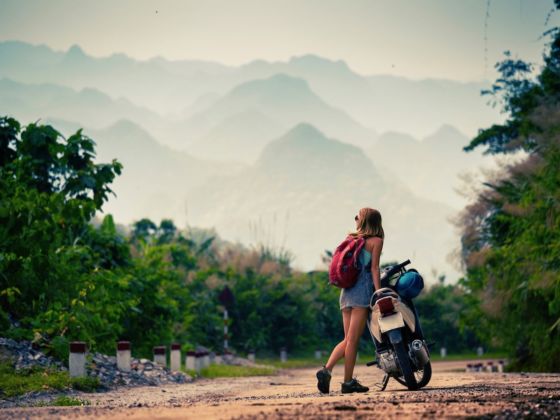
The Best Way to Motorcycle Across Ho Chi Minh Road in Vietnam
What is Ho Chi Minh Road?
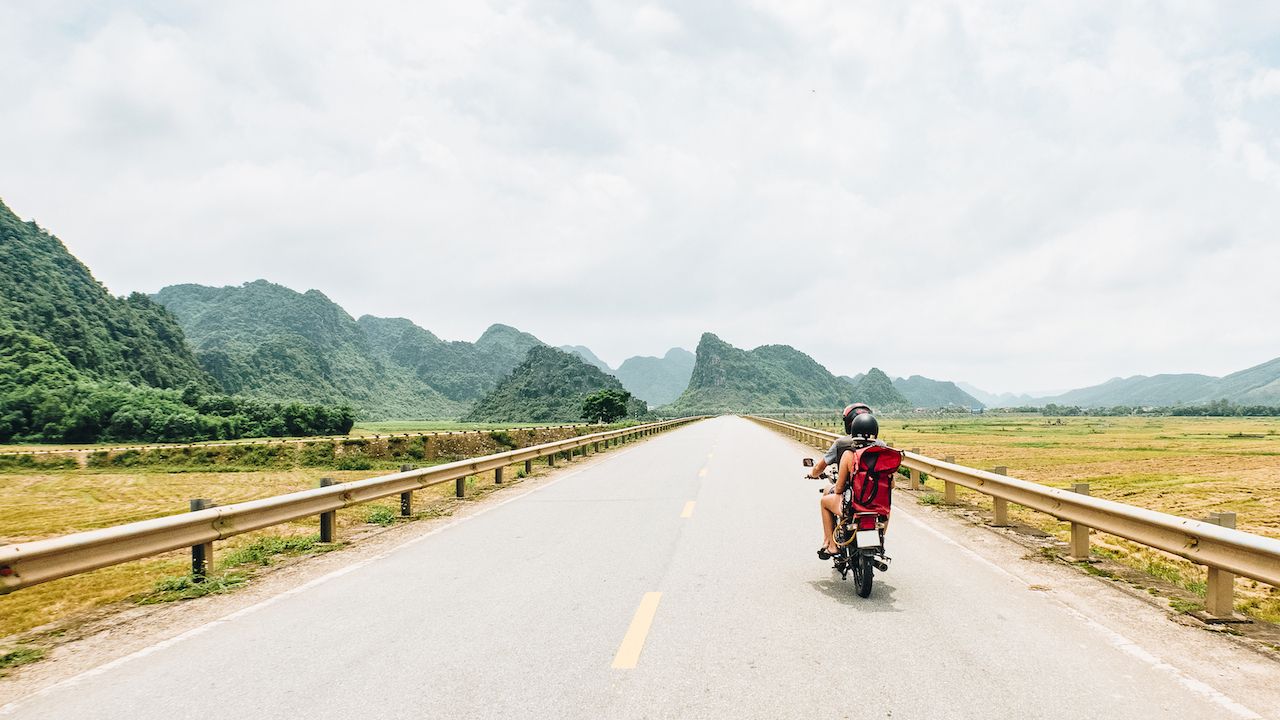
Photo: Ser Borakovskyy/Shutterstock
Ho Chi Minh road starts in southern Vietnam and stretches all the way from Ho Chi Minh City, formerly known as Saigon, to Hanoi in the north. It spans almost 770 miles, which you can tailor according to your trip and how long you want to be on the road. While Ho Chi Minh Road is becoming more popular, there will be many moments when you’ll feel like you’re the only person in Vietnam.
The road traverses heavily forested limestone mountains, follows along rivers, and cuts through endless rice paddies. You’ll interact with welcoming people who will warmly share their culture and food with you, and you’ll encounter children who’ll excitedly yell, “Hello!” to any foreigner they see.
Vietnam’s roads are well defined, so if you’re looking for a shorter trip you can start anywhere — not just at its endpoints in Hanoi or Saigon. It’s well paved, so you don’t have to worry about potholes or bumpy roads and you can choose to go north to south or south to north. As we describe below, the most gorgeous part of the road is in central Vietnam, so if you only do a section of it, do the central section.
Regardless of the route you choose, you’ll want to avoid monsoon season in Vietnam when the roads can get dangerous and wash out. Steer clear of the wettest months from May to October. Instead, opt to travel during the typically drier months of November to April. Bring rain gear nonetheless as it can still rain outside of monsoon season.
Getting a motorcycle

Photo: Xita/Shutterstock
You can buy a motorcycle just about anywhere in Vietnam as motorbike culture is big there. You’ll find plenty of Facebook groups where people sell motorcycles, such as Vietnam Backpackers & Travelers Sale or Vietnam Motorcycle For Sale. Any big tourist hub in Vietnam will have hostels with people looking to sell or buy motorcycles, which can come in handy when you finish your trip.
Many of these bikes are cheaper models and have already gone through thousands of miles, so they are prone to problems or breakage. In order to make sure the bike functions properly, ask the owner if you can take it for a test run around the area. If you’re uncertain about buying a bike with an unknown history, you could opt to go with a motorbike company.
Good companies include Dragon Bikes, QT Motorbikes and Tours, Vietnam Motorbike Tours, Style Motorbikes, and Tigit. Some companies offer to escort you, but you’re also welcome to go alone. Most of these outfits offer cheap damage insurance and will give you newer bikes that are in excellent shape and won’t break down. If you want to save on space, they can also ship any extra luggage you might have to your next destination.
Going with companies may cost more if you’re on a budget. However, if you’re a beginner, going with an established company where you can get a semi-automatic or automatic bike is a much safer bet. They’ll also help you map out your journey, so you can get a better idea of how long driving will take and where you need to go.
The gem of Ho Chi Minh Road
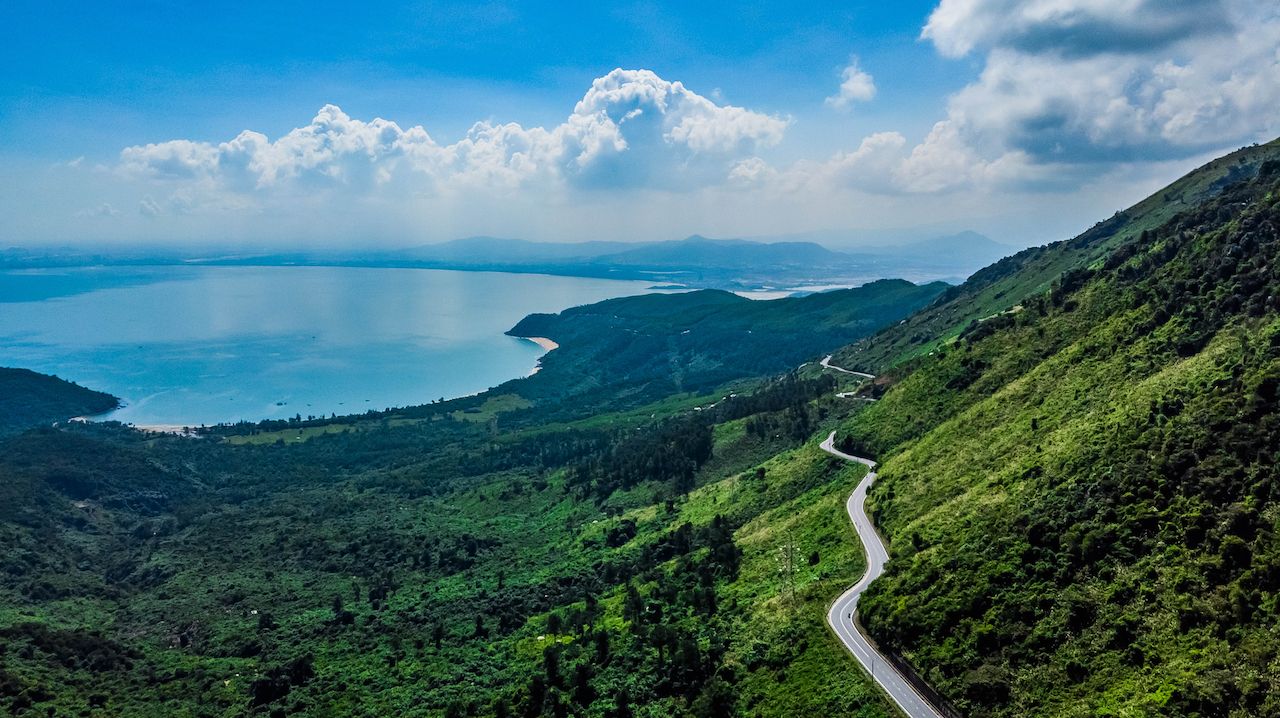
Photo: Oskar Hellebaut/Shutterstock
Whether you have three days or three weeks, you’ll want to drive the central section as this is easily the best part of the trip. An easy way to access the central section is to start in Da Nang, a coastal city that you can fly into. You’ll want to head out west on either QL14G, which is a more remote road but a shorter distance to Highway QL14, which is Ho Chi Minh Road.
Another stunning option is to head northwest, first along the coast then inland on QL1A, also known as Hai Van Pass. That road will take you through Hue. Head north once you hit QL15, which is Ho Chi Minh Road. Throughout this section you’ll be driving along some areas where you won’t see another driver or person for long stretches.
Khe Sanh to Phong Nha
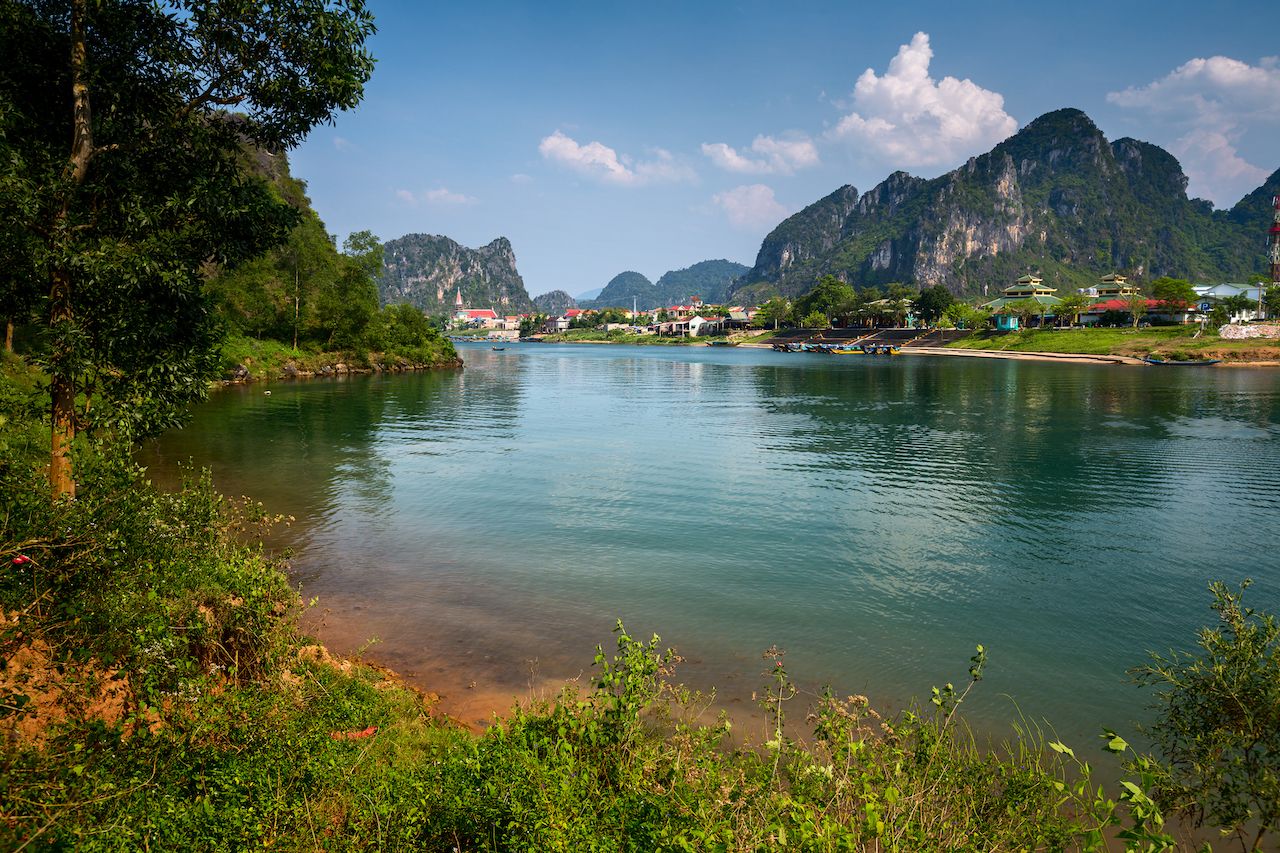
Photo: Dudarev Mikhail/Shutterstock
The most stunning part of this section is the road to Phong Nha. The road between Khe Sanh and Phong Nha features a never-ending backdrop of mountains where each forested peak is hidden by thick clouds and fog. The weather changes rapidly throughout the mountain passes, and you can experience heavy rain and deep blue skies multiple times in a day.
You’ll see large mountains alongside a patchwork quilt of rice paddies, complete with a calm river cutting through the valley. With several long stretches between towns, it’s critical to bring extra fuel with you and store it safely on your bike.
Once you reach Phong Nha, right next to Ke Bang National Park, take a couple of extra days to explore the area. Hidden underneath these heavily forested limestone mountains is a giant cave system that houses the world’s largest cave. You can enter a few caves with a guide, or if staying above ground is more your thing, you can do a tour on the river.
If you’re driving north and are short on time, you can drive a ways past Phong Nha to Vinh and finish there. From there you can either sell your bike, or if you rented from a company, you can ship your bike to Hanoi where the bike company can pick it up or you can pick it up yourself.
Come for the view. Stay for the vibe.
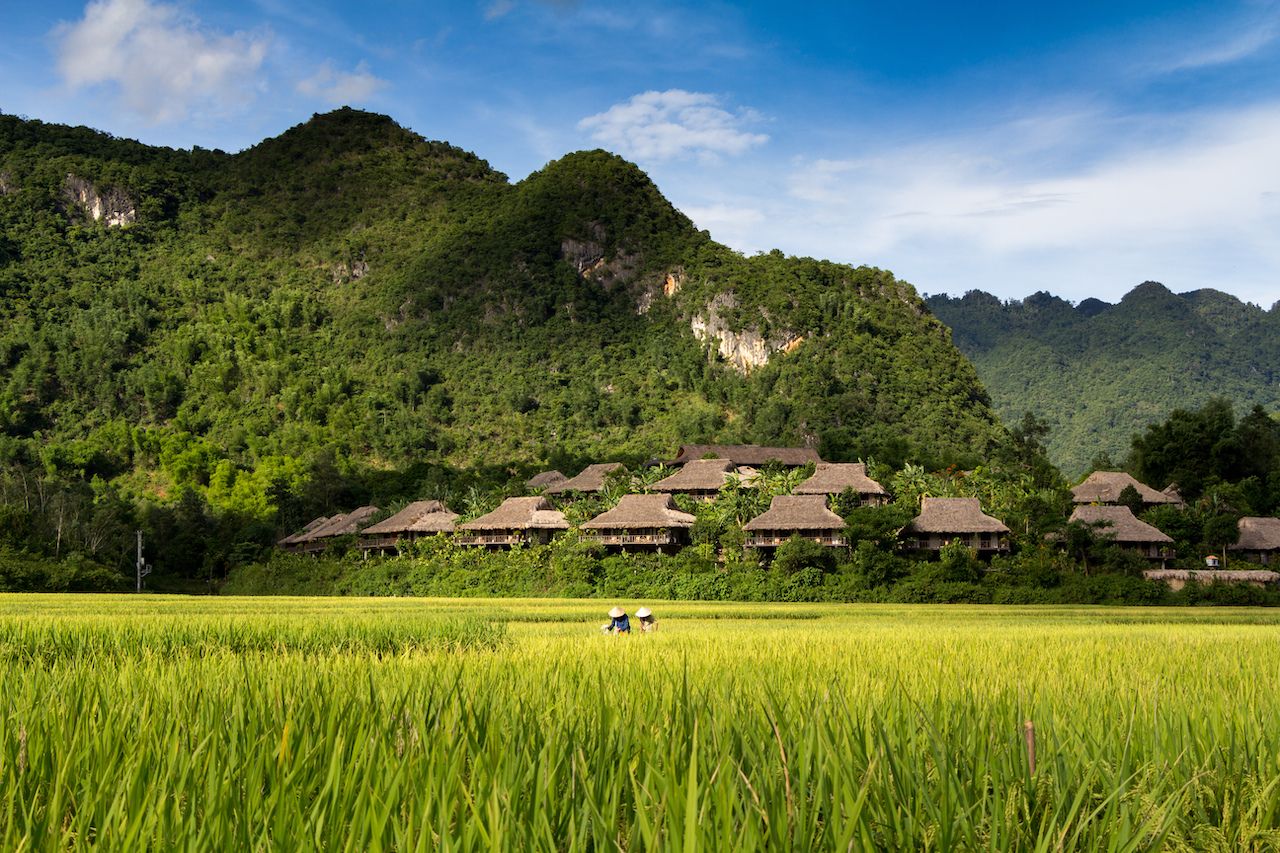
Photo: Carl Dupont/Shutterstock
As you drive on Ho Chi Minh Road, you’ll have an option to stay with locals in what’s called a homestay. They’re like the pre-Airbnb stays, but the host will also feed you and give you a look at their everyday lives. Homestays will be easy to identify as they’ll have a big sign outside of their property that says “homestay” on it. Assume everything is cash-only and have plenty of Vietnamese Dong on hand.
Homestays are a great way to get a look inside the life of some of Vietnam’s much less populous ethnic groups. You’ll be able to interact with the residents of the area, eat the local food, and, in some cases, see their traditional clothing and houses. Some homestays will be more memorable than others, and may feature thatched huts with wooden floors and comfortable mattresses under mosquito nets.
If you’re uneasy about homestays, many have been vetted by previous visitors. You can look up reviews on them by using booking websites such as Booking.com. This will help you know what to expect and which places would be a better fit for you. If you prefer hotels, most towns will have hotels. The hotels will also let you reserve for that evening, so don’t worry about booking in advance.
Driving (safely) in Vietnam

Photo: Phuong D. Nguyen/Shutterstock
When driving in Vietnam, you need to learn how to be flexible and slow down when necessary. However, you also need to commit to a direction you’re going in, especially when turning in front of oncoming traffic. It’s a balance between being assertive and flexible and may take some trial and error. Being too aggressive in your driving can endanger others, so when in doubt, drive defensively.
Stay vigilant, especially while driving the mountain passes. Watch out for huge trucks and buses on blind corners. Most drivers honk their horns when rounding the turns as a warning that says, “Hey, I’m here.” They also do it while they’re passing other drivers, as passing is very common in Vietnam. Get comfortable with using your horn, as it can help you — and the other drivers on the road — stay safe.
You’ll also want to look out for livestock in the road. Water buffalo, cattle, and goats all frequent the roads and will sometimes just sit in the middle of the road, so you’ll need to navigate around them.
Before you go, make sure you’re completely covered by your insurance. If you’re not legally allowed to drive in another country and get hurt in an accident, chances are good that your health insurance company won’t cover you. Talk with your auto insurance company before traveling as well to see if they cover you. If neither your home health nor auto insurance companies work out, consider purchasing travel insurance, such as World Nomads or InsureMyTrip. Again, this will require that you have a license to drive a motorcycle back in your home country. Most people in Vietnam operate motorcycles without licenses; however, you do so at your own risk.
Take your time on this trip. Not only because it’s safer but also because there’s so much fascinating scenery to take in. Take frequent breaks for the sake of your rear end, as well as photo ops because there’ll be a lot of them. Ha Long Bay can keep its tourists — Ho Chi Minh Road features green limestone mountains and river valleys aplenty, all without the crowds and price tags.